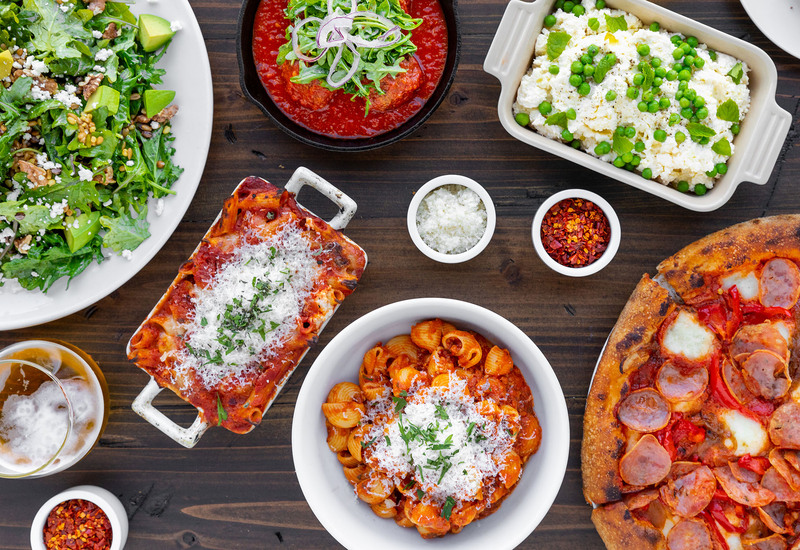If you’re a catering business owner, chances are you’ve put time and money into your website. Maybe you had a creative design agency build a clean layout. Maybe you posted beautiful food photos and listed your services. Maybe you even have an inquiry form somewhere near the bottom.
But then nothing happened. Sure, you get a handful of inquiries here and there, but most people are still calling from referrals while your website sits there. In a digital world where people make most of their decisions online, that’s a red flag.
Of course, it’s not your fault. It’s not that your food isn’t amazing. Or that your service isn’t top-notch. It’s that your website wasn’t built to sell.
A catering website needs to function like a sales rep. One that works while you’re prepping for events, loading vans or coordinating a wedding buffet in 93-degree heat.
Let’s walk through what that means and how to turn your site into something that fills your calendar without you chasing every lead.
Too many caterers treat their website like a gallery. They show beautiful dishes, maybe a menu PDF, a contact form and a paragraph about how “passionate” they are. But let’s be honest: every caterer within a 50-mile radius does the same things.
None of these builds trust. And they definitely don’t book events. Because visitors aren’t simply looking for information. They’re looking for clarity, trust and professionalism. Most of all, they’re looking for a reason to swipe their credit card and choose you.
They want to know:
-
What do past clients say?
-
Are you available for my date?
-
What makes you different from the other 12 tabs I have open?
-
Do you handle weddings? Corporate events? Private dinners?
-
Can I get pricing or a quote fast? If so, exactly how long will it take?
If your website doesn’t answer those questions quickly and confidently, they’ll move on.
Tip #1: Make Your Call to Action Unmissable
Most catering websites bury the inquiry form at the bottom of the page, with a vague “Contact Us” link in the top menu. That’s a missed opportunity. Every page should have a clear, compelling call to action, especially on mobile.
Try one of these:
By the way: don’t make visitors scroll to find it. Add buttons in multiple spots. Make them obvious. Make them easy to tap. Don’t make your website visitor dig for answers.
Outdated PDFs slow down your site and kill mobile usability. Instead, build a dedicated menu page with categories that can be updated easily: hors d’oeuvres, entrees, vegan options, seasonal specials, etc.
Bonus points if you let people build sample menus or flag favorites. Make it interactive if you can. Even a simple form like “What kind of food do you love?” can help start a conversation.
Also, offer a downloadable catering package, but collect an email first. That turns casual browsers into leads you can follow up with using proven email marketing.
Tip #3: Use Real Photos That Tell a Story
People eat with their eyes. But they book with their hearts.
Show more than just food shots. Show your team in action. Setups. Behind the scenes. Guests enjoying the experience. Couples laughing. Buffet spreads. Champagne pours. Details that show why you’re the catering answer they’re looking for.
Then add a short caption:
-
“Prepping for a 200-person wedding in Knoxville”
-
“Holiday catering setup for a corporate client downtown”
-
“Brunch grazing table…yes, it was as good as it looks”
This builds credibility. It says, “We don’t just make food. We create experiences.” Which is precisely what your prospects are buying.
Tip #4: Add Social Proof Everywhere
You might have glowing reviews on Google, The Knot, or Yelp. But are they on your website? These days, you can never have enough social proof in various formats sprinkled across your site.
Feature them in every section:
-
A testimonials slider near the top
-
Event-specific quotes near each service offering
-
Screenshots of real emails or texts from happy clients
Better yet? Add photos to go with them. A couple smiling in front of their wedding spread. A corporate lunch layout with the company logo in view. People trust people. Make sure your future clients see the reactions of your past ones.
Tip #5: Create Event-Specific Landing Pages
Don’t cram all your services on one generic page. This creates overwhelm, confusion and indecision. Instead, build separate landing pages for:
-
Wedding Catering
-
Corporate Events
-
Private Dinners
-
In-Home Chef Services
-
Holiday Parties
-
Venue Partnerships
Each one should speak to that client’s specific concerns. Weddings? Talk about tastings, setup, timeline management. Corporate events? Talk about punctuality, drop-off options and bulk orders. Tailored messaging converts far better than one-size-fits-all blurbs.
Tip #6: Make It Easy to Inquire and Book
Some clients are ready to book. Others just want information. Your website must have an automated system to ensure both types of prospects get exactly what they need.
Offer multiple paths:
The more friction you remove, the more leads you’ll catch.
And when someone submits a form? Follow up fast. Send an automated confirmation email. Let them know when they’ll hear from you. Consider using a CRM or automated email sequence to nurture those leads until they’re ready to commit.
Tip #7: Optimize for Mobile
Over 60 percent of visitors to service-based business websites are coming from their phones. If your website loads slowly, looks clunky, or hides your forms behind awkward dropdowns, you’re toast.
Make sure your:
-
Site loads in 3 seconds
-
Forms are mobile-friendly
-
Phone number is tap-to-call
-
Photos scale cleanly on small screens
Run a quick test through Google’s PageSpeed Insights or just pull it up on your own phone. If it feels frustrating, your customers are already gone.
Your Website Should Book Events, Not Just Look Pretty
Your catering website is more than a menu. It’s a full-blown sales engine. One that should capture attention, answer questions and turn strangers into scheduled tastings. The best part? You don’t have to figure it out alone.
At Slamdot, we specialize in building websites for service-based businesses that need more than just a nice design. We create marketing assets that attract, convert and drive real ROI. Clients love our track record, transparent pricing and team that treats your catering business like our own.
Want a catering website that helps you book more events? Contact us today!






